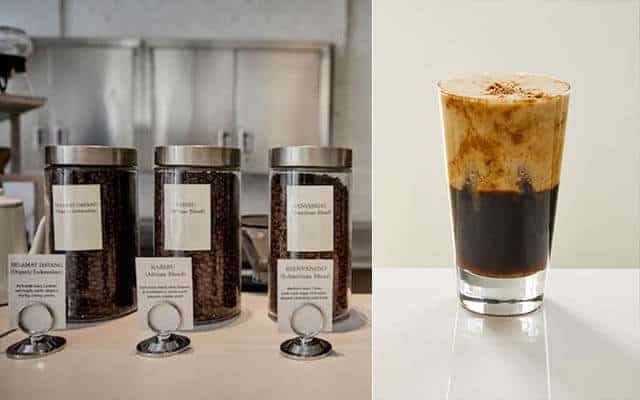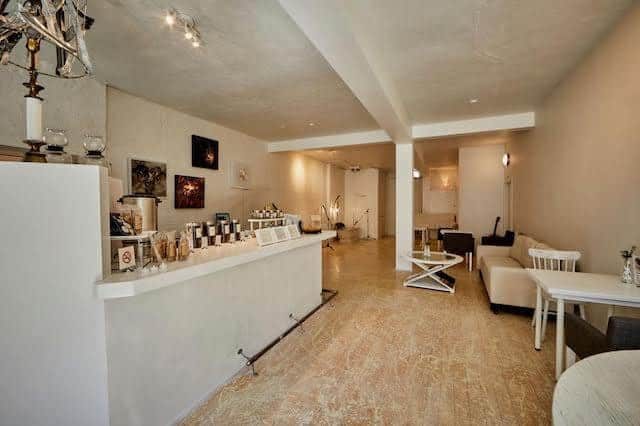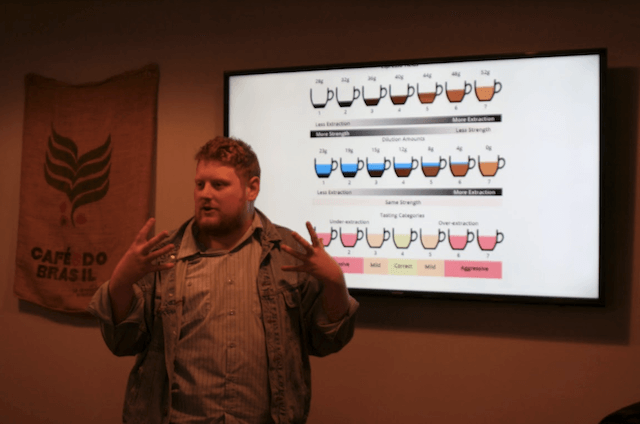
A lot of people in the retail coffee industry apologize before mixing the term third wave into their conversations, leaving it unclear whether third wave is a product or an attitude.
“I hate the term,” a barista insists while drawing a rosetta flower in the foam confection of milk-infused coffee— “but that’s what they mean when they say third wave coffee.”
Or a roaster can’t avoid the term while giving tasting notes on an Ethiopian blend which, they tell you, displays a nuttier finish than you might expect.
It’s not difficult to understand the aversion to an art-schooly moniker that evokes a six dollar latte and a ten minute wait; especially while espresso evokes “express.” Maybe a commodity that is boiled in water to deliver caffeine ought not be elevated to a level where it is described in terms of historical epochs or artistic movements. But what, exactly, does the term mean? And why do folks in the industry seem to use it compulsively?
________

First wave coffees like Folger’s or Chock Full O’ Nuts are blended coffees produced in a lab. They are meant to be left boiling in the pot next to the deli grill, quick caffeine that is easy to drink with sugar and milk that shouldn’t cost more than $1.25.
Second wave coffees, commonly found in a Starbucks or Peet’s store, are mass produced, mostly over-roasted beans meant to evoke a uniform experience. Peet’s coffees taste exactly the same in Brooklyn Heights as they do in Seattle.
Third wave coffees are often unblended “single origin” grinds, unblended so that the specific qualities of the soil where the beans were sourced can come through. Counter Culture, a major producer of third wave coffee, hosts weekly “cuppings” at several of their roasteries, where customers taste espresso with a spoon and describe the fruit profile, the acidity, and the terroir — the sense of place— evoked by the coffee.
Third wave coffee distinguishes itself from the other waves by the thought that goes into producing and consuming it and the global nature of that production.
That first, second, and third wave coffee all exist in Brooklyn in 2017 will be clear to anyone who has walked by the three Starbucks on Flatbush on their way to the Hungry Ghost community coffee shop, which serves single-origin Stumptown coffee roasts in a minimalist space.
________

Jai Lott says that until recently New York was “20 years behind” coffee culture in his hometown of Noosa— a surfing village on the east coast of Australia. Lott is now the Coffee Director at DUMBO-based Bluestone Lane Coffee. He hopes that by elevating the barista role to a knowledge-based position he can help bring New York up to speed.
That’s why each new hire at Bluestone Lane attends a two-week course with Freja Karl-Crooks and Georgia Rose Goldsbrough Reardon, Coffee Educators. The class takes place in a lab, where students pull and taste espresso shots over and over until they can consistently yield a good ratio of solid coffee to liquid espresso. The process would seem meditative if everyone were not wired on stimulants.
The lecture portion of the class is led by Head Roaster John Johnson, whom Karl-Crooks introduces as a “coffee science guy.” But in truth, third wave conversations generally have less to do with hard science and more to do with geography, history and politics.
In his lecture, Johnson says he loves Honduran coffees for their pineapple acidity and caramel finish, but adds that it is difficult to get a lot of Honduran coffee because “Honduras was the most recent democratically elected Central American regime to be overthrown by the US.”
Coffee cupping, like wine tasting, is more about conversation and context than testing observable hypotheses.
A Mirror in the Woods, an experimental tea house/art space in Gowanus uses coffee to “Invite, fresh, inventive conversation.”
________

The shop is managed by Miho Morita, a visual artist, and Fumio Tashiro, an experimental musician. The audio system sometimes amplifies looped and effected sounds from a leaky bathtub next to the restroom. The clean white walls serve as a canvas for Morita’s video exhibitions during Friday night open-mics.
Tashiro says he approaches coffee the same way he approaches music and, perhaps, everything: “My first challenge is trying something new. I love to experiment.”
Third wave baristas don’t just push the espresso button. They experiment and get creative with their craft. It seems only natural that they compete to find out who is the best.
Sam Lewontin, who manages the Everyman Espresso in Park Slope, has finished fourth in the US Barista Championships for five years in a row.
“Just because around the time of the Farm Bill,” Lewontin says, “[US legislators] tried to figure out, how do we get people to pay 10% of their income on food so that they can spend their money on bullshit?— that does not mean good coffee should not exist.”
But Lewinton acknowledges “that $5 mocha can be an engine of gentrification in some ways.” Lovely as they both are, there are two coffee shops in Brooklyn called “Outpost.”
What we are talking about when we talk about coffee is economics: third wave coffee is a product of a global supply chain that allows for pricier direct-to-market farm goods. Whether or not anyone actually ought to be apologizing for the term, only history can tell.
Leave a Reply



